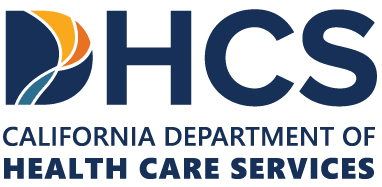The picturesque landscapes and diverse cultures of California often overshadow the darker reality of drug addiction that plagues many individuals across the state. As one of the most populous states in the United States, California faces a significant challenge in addressing drug addiction. However, amidst this challenge, the state has also developed a wide range of treatment options aimed at helping individuals break free from the vicious cycle of addiction. In this article, we will explore the landscape of drug addiction treatment in California, from its unique challenges to the variety of treatment approaches available.
California’s position as a cultural hub and its porous borders make it susceptible to a variety of illicit drugs, both imported and locally manufactured. Drugs like methamphetamine, uploads, cocaine, and marijuana pose substantial threats to the state’s population. According to the California Health Care Foundation, in recent years, there has been a concerning rise in upload-related overdose deaths. The opioid crisis has led to an increased emphasis on harm reduction strategies, access to naloxone, and expansion of medication-assisted treatment (MAT) programs. The state’s unique challenges require a multi-faceted approach to treatment and prevention.
Diverse Treatment Approaches: California Drug Addiction Treatment
- Inpatient rehab centers offer a structured and intensive approach to California drug addiction treatment. Patients reside within the facility and receive 24/7 medical and therapeutic support. These centers often employ detoxification, counseling, group therapy, and individualized treatment plans to address the physical and psychological aspects of addiction.
- Outpatient treatment provides flexibility for individuals who cannot commit to residential programs. Patients attend therapy sessions and counseling while living at home. This option suits those with a strong support system and a less severe addiction.
- Various therapeutic approaches, such as cognitive-behavioral therapy (CBT), dialectical behavior therapy (DBT), and motivational interviewing, are employed to help individuals understand the root causes of their addiction, develop coping mechanisms, and prevent relapse.
- California’s holistic approach to health and wellness extends to addiction treatment. Yoga, meditation, equine therapy, art therapy, and wilderness therapy are integrated into some programs to address addiction’s physical, mental, and emotional aspects.
Prominent Centers in California Drug Addiction Treatment
- With several locations across the state, Promises offers individualized treatment plans, detoxify programs, and a focus on co-occurring mental health disorders. Their holistic approach emphasizes healing the mind, body, and spirit.
- This renowned center combines evidence-based therapies with the 12-step principles of Alcoholics Anonymous. They offer inpatient and outpatient programs and focus on long-term recovery and relapse prevention.
- Situated in a luxurious setting, Cliffside Malibu provides personalized addiction treatment. Their programs encompass medical detox, individual therapy, group sessions, and holistic therapies.
- California is also known for its numerous sober living homes that offer individuals a supportive environment to transition from treatment back into everyday life. These communities emphasize accountability, structure, and peer support.
Overcoming Barriers to Accessing Treatment at California Drug Addiction Treatment
While California boasts a variety of treatment options, several barriers still impede individuals from seeking and receiving the help they need:
- The stigma associated with addiction often prevents individuals from seeking treatment due to fear of judgment. Continued efforts are needed to raise awareness and promote acceptance.
- Many Californians lack adequate insurance coverage for addiction treatment. Advocacy for improved insurance coverage and affordable treatment options remains crucial.
- Rural areas often have limited access to treatment centers, making it challenging for individuals in these regions to seek help. Telehealth and online resources can bridge this gap to some extent.
- California’s diverse population requires treatment centers to be culturally sensitive and offer programs tailored to different communities.
Addressing drug addiction in California is a complex endeavor that requires a multifaceted approach. From understanding the scope of addiction’s reach to exploring diverse treatment approaches, the state is actively working towards providing support and solutions for those struggling with addiction. With the collaboration of treatment centers, policymakers, and communities, there is hope for a brighter, addiction-free future in the Golden State.



